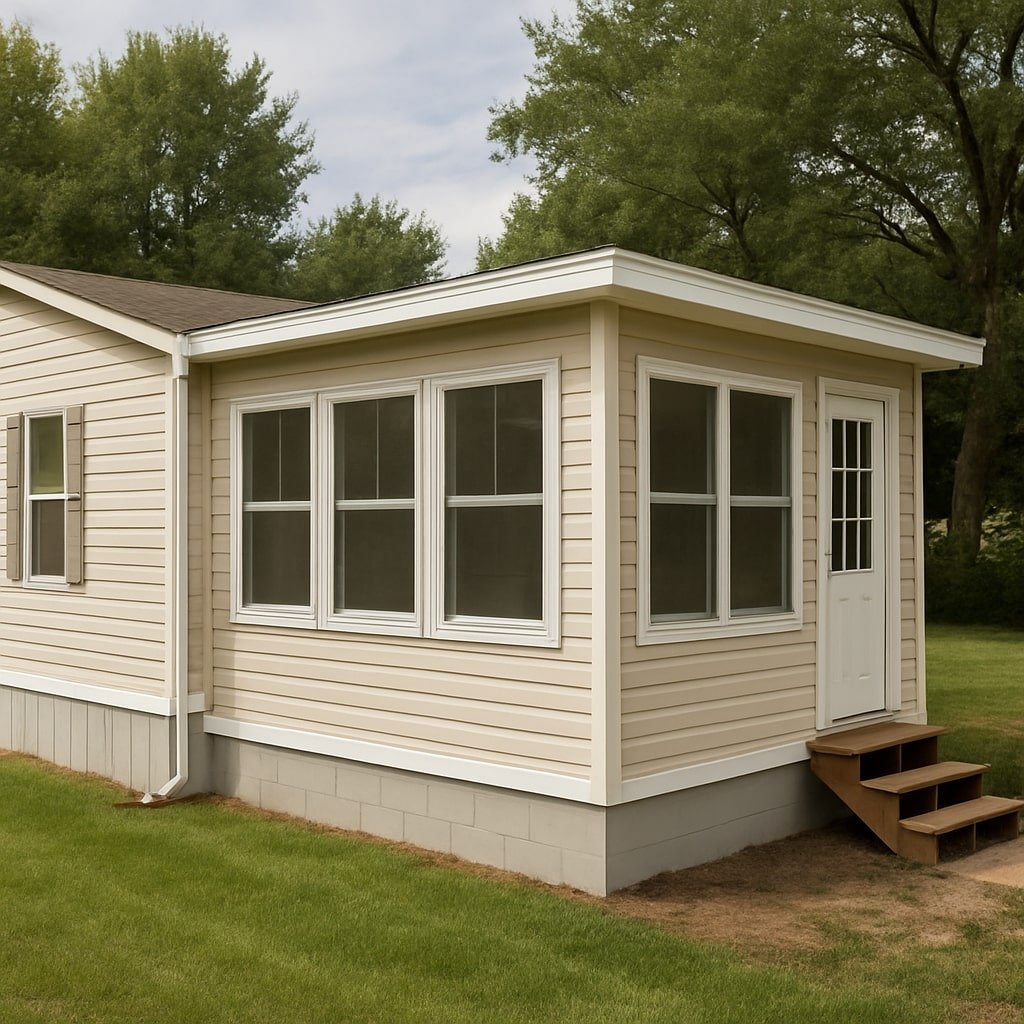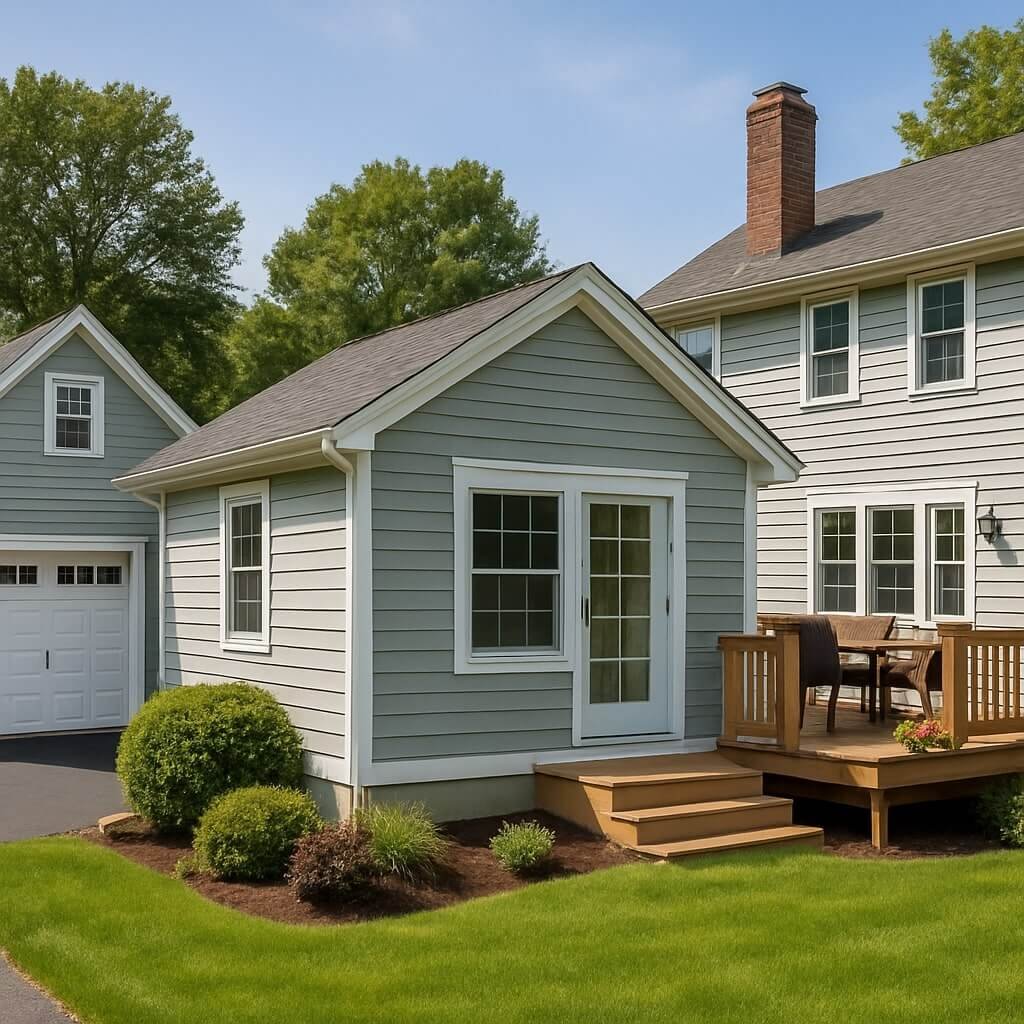When you’re planning a home addition, it’s easy to focus solely on the structure itself. However, unexpected costs can quickly derail your budget. From permits and inspection fees that vary by location to potential utility upgrades for new kitchens or bathrooms, these expenses can add up fast. Don’t forget about landscaping adjustments and interior design choices either. Plus, setting aside a contingency fund is essential. Let’s explore these hidden costs further.
Key Takeaways
- Permits and inspection fees can add up, especially if your project requires multiple types of permits and inspections at various milestones.
- Utility upgrades, such as electrical or plumbing enhancements, may be necessary to accommodate increased demand from new structures.
- Landscaping adjustments can incur unexpected costs for relocating trees or creating new outdoor features that complement the addition.
- Interior design and furnishing expenses can exceed initial estimates, especially when ensuring harmony with existing home aesthetics and functionality.
- A contingency fund of 10-20% of the total budget is crucial to cover emergency repairs and unexpected project delays.
Permits and Inspection Fees

When planning a home addition, understanding permits and inspection fees is essential to your budget. You’ll encounter various permit types, such as building, electrical, and plumbing permits, each with distinct costs.
Research your local regulations, as fees can vary considerably by location. Next, familiarize yourself with the inspection processes; these guarantee that your addition meets safety codes and standards.
Schedule inspections at key project milestones to avoid costly delays. Remember, neglecting permits can lead to fines or even the need for costly modifications later.
Factor these expenses into your overall budget to avoid surprises during your project.
Utility Upgrades
As you plan your home addition, it’s essential to contemplate potential utility upgrades that may be necessary to support the increased demand.
First, assess your electrical capacity; you might need to upgrade your service panel or wiring to handle new appliances or lighting.
Don’t overlook plumbing requirements either; adding bathrooms or kitchens can strain your existing system, requiring new pipes or fixtures.
Consider hiring professionals to evaluate your current utilities and provide recommendations.
By addressing these upgrades early, you can avoid costly renovations later and guarantee your home addition operates efficiently and safely.
Planning now saves you headaches down the road.
Landscaping Adjustments
Landscaping adjustments are often necessary when planning a home addition, and they can greatly enhance both functionality and curb appeal.
You’ll want to take into account how the new structure fits into your existing landscaping design. This might mean relocating trees, adding pathways, or incorporating new outdoor features like patios or decks.
Think about drainage and soil stability, too, as these can impact both your addition and the surrounding landscape.
Hiring a professional can help guarantee that your adjustments complement your home’s style while improving the overall aesthetic.
These costs, while sometimes unexpected, are essential for a cohesive outdoor environment.
Interior Design and Furnishing
While planning a home addition, paying attention to interior design and furnishing is essential for creating a cohesive and inviting space. Start by choosing color schemes that complement your existing home; this guarantees harmony throughout.
Consider how natural light affects your space and select colors that enhance it. When it comes to furniture selection, prioritize functionality and style. Choose pieces that fit the scale of your new area and reflect your personal taste.
Don’t forget to incorporate storage solutions that blend seamlessly into your design. Thoughtful choices in interior design and furnishing will make your home addition feel complete and welcoming.
Contingency Fund for Unexpected Issues
When planning a home addition, setting aside a contingency fund for unexpected issues is essential to avoid financial strain. You never know when you’ll face emergency repairs, like plumbing problems or structural concerns, that can arise during construction.
Additionally, project delays due to weather or supply chain issues can inflate costs. Aim to allocate 10-20% of your total budget for this fund, ensuring you’re prepared for unforeseen circumstances.
This financial cushion not only provides peace of mind but also keeps your project on track without the stress of scrambling for extra funds. Be proactive, and safeguard your home addition journey.
Conclusion
When planning your home addition, it’s essential to anticipate these unexpected costs. By budgeting for permits and inspections, potential utility upgrades, and landscaping changes, you’ll avoid financial surprises. Don’t forget about the importance of thoughtful interior design and furnishings to enhance your new space. Finally, setting aside a contingency fund of 10-20% of your budget can provide peace of mind for any unforeseen issues. With careful planning, you can create the perfect addition to your home.



